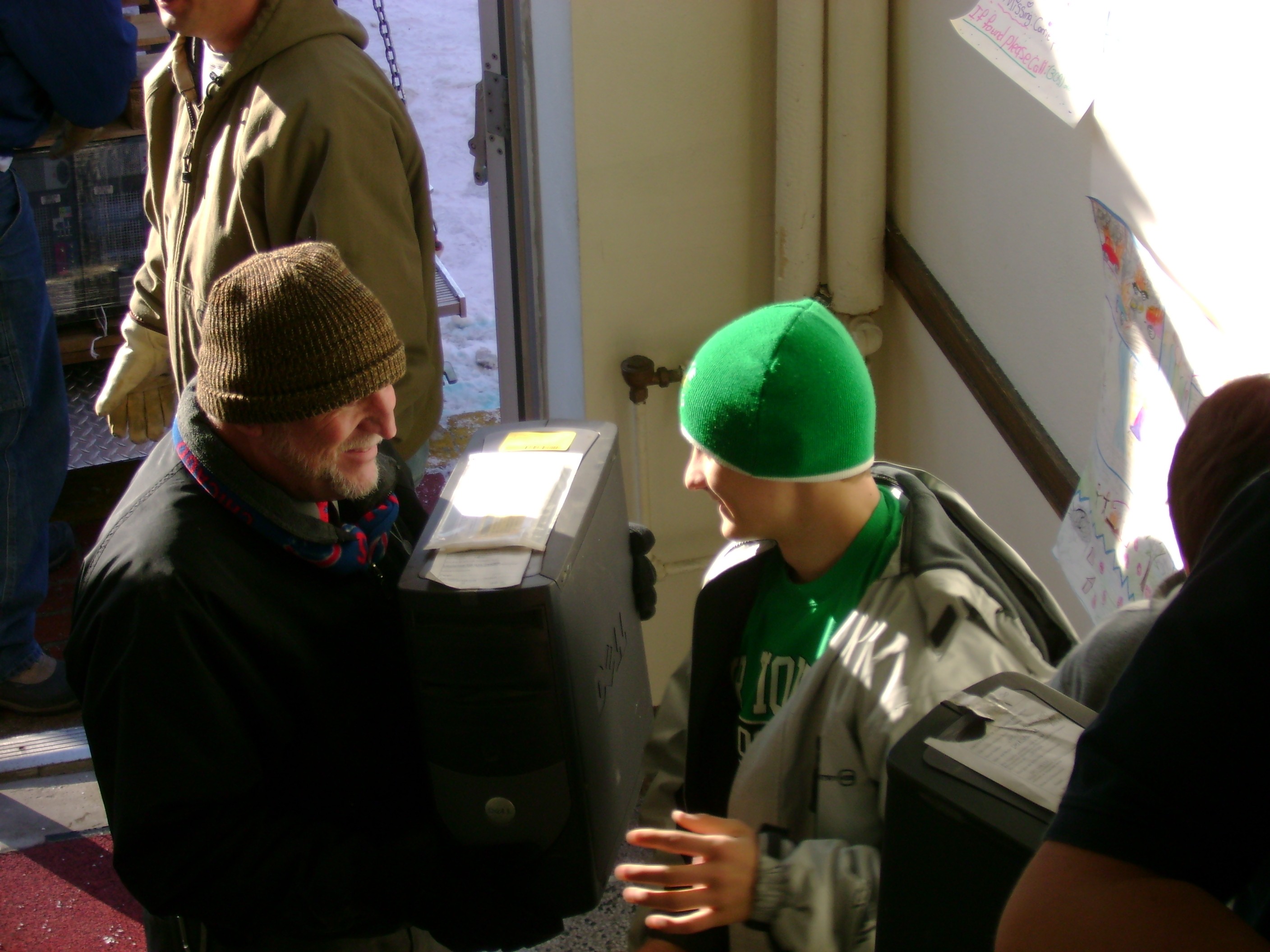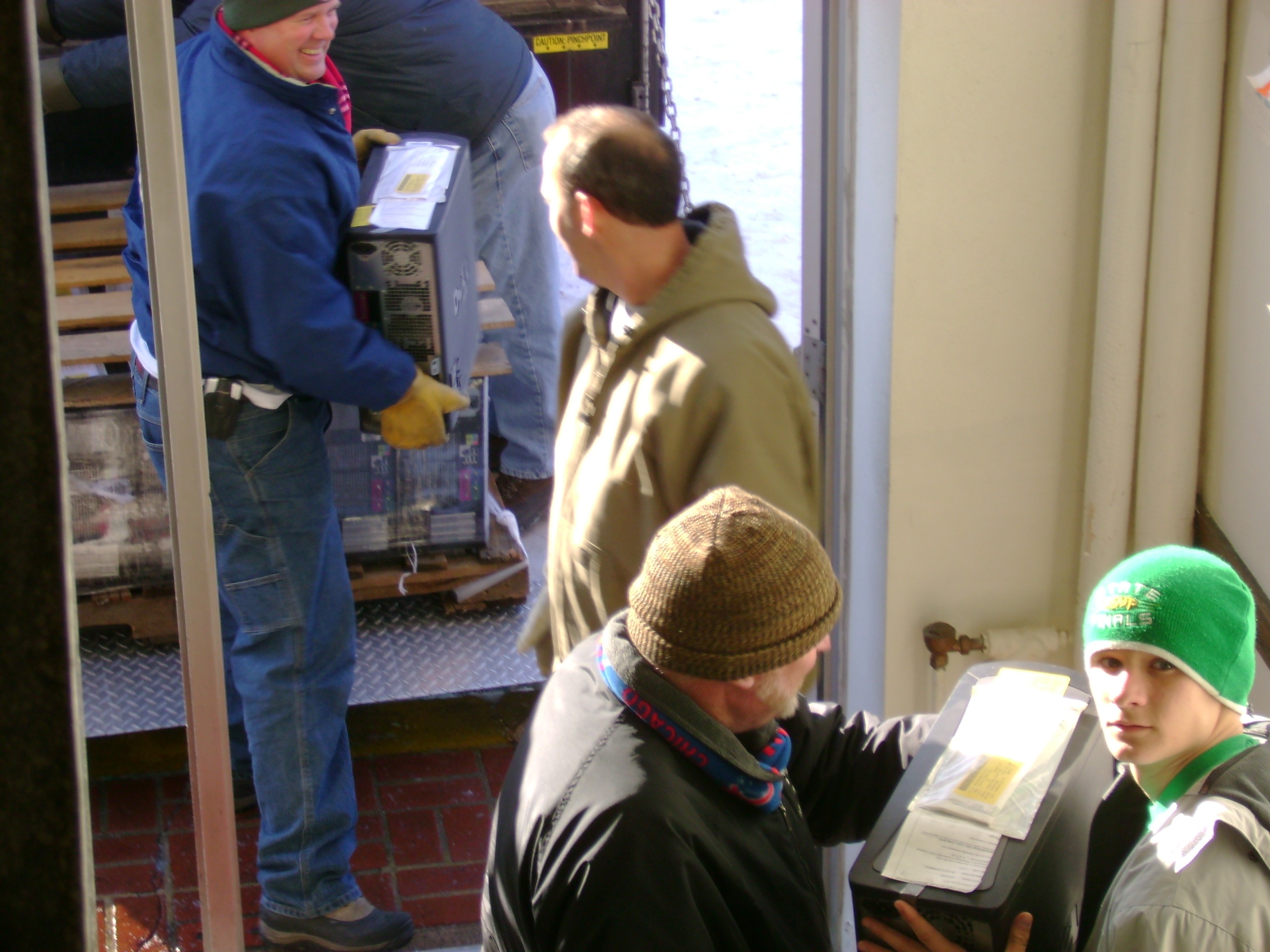Despite economic turmoil, a long-lost program of donating federal government computers to schools is coming alive at Rock Island Arsenal, Ill., and the surrounding community.
Former President Bill Clinton signed an executive order mandating that the federal government donate excess and outdated computers to schools ranging from pre-kindergarten through 12th grade and to non-profit organizations. It's called the Department of Defense Computers for Learning Program and focuses on four major developments in American education: making modern computer technology an integral part of every classroom; providing teachers with the professional development they need to use new technologies effectively; connecting classrooms to the National Information Infrastructure; and encouraging the creation of excellent educational software.
"We are taking our computers that were being sold for almost nothing and giving them to schools that have not received new computers in eight or nine years," said Lt. Col Jerry Martin, Army Sustainment Command automation management officer.
Rock Island Arsenal re-started the program in March 2009, when a memorandum of was signed between the garrison command and Defense Reutilization and Marketing Office (DRMO).
"We try to share the wealth with schools throughout the Midwest," said Martin. "For example, one school might request 300 computers, so we will give that school as many as we can without neglecting other requests. However, we will endeavor to find a way to fulfill their needs; it just might take some time."
"RIA has given 419 computers, 36 laptops, 56 flat-screen monitors, and two printers to schools," said Sherrill Benson, disposal service representative of DRMO.
Beneficiaries include: Jordan Catholic School, Rock Island, Ill.; Earl Hanson Elementary School, Rock Island, Ill.; St. Paul Lutheran School, Moline, Ill.; Carlton High School, Carlton, Minn.; Valmeyer Elementary School, Valmeyer, Ill.; and Lutheran Preparatory School, Watertown, Wis.
"At the beginning of this school year, we had one 11-year-old computer in each classroom and 30 seven-year-old computers in each of our two libraries," said Janine Parr, director of advancement at Jordan Catholic School. "We are in the process of replacing those with the newer computers received through the CLP."
Since December 2009, the school has received 97 desktops and 27 laptops. Each classroom will now have two computers and each lab will have 30. The laptop computers will be placed on carts to be used in 5th through 8th grade classrooms.
"Through the CLP we have been able to provide newer equipment at no cost to the Jordan community," said Parr. "It has allowed us to realize technology objectives and enable increased computer time per student."
Local law enforcement agencies have been able to participate in the program as well.
"The Law Enforcement Support Office (LESO) is another special program that has received 26 computers, 16 laptops, and 34 flat-screen monitors," said Benson.
The police departments from East Moline, Ill.; Monmouth, Ill.; Somonauk, Ill.; Chicago, Ill.; and Walkerton, Ind. have acquired equipment from RIA.
Not only does CLP allow schools and organizations to save money, but
it saves the government money, too.
"When we are able to give computers to local schools or other organizations, we do not have to pay for them to be shipped to warehouses throughout the United States, where they sit until they can be sold as a whole or be stripped for parts," said Martin.
The CLP faces two major challenges. The first problem is that many departments are not aware of the program, Martin said. If ASC people do not specify that the computers they are disposing of should be assigned to the program, they are shipped to the warehouses instead. The second challenge is getting the word out to local schools and organizations.
"The way schools find out about the program is through word of mouth," said Martin. "Or someone who has worked here (RIA) has told a school district and then the request trickles down my way."
RIA is in need of more agencies to become part of the CLP.
"We have schools that belong to the program and are waiting for computers, laptops and monitors to become available for donation," said Benson.
While requirements add some extra work for contributing organizations, they need not be a deterrent. The return on investment more than matches the cost.
"It really helps when the agencies on the Arsenal turn in their computers and laptops with the hard drive purged or degaussed instead of removed," said Benson. "This takes extra work and time, but is greatly appreciated by the schools."
For agencies on the Arsenal that wish to participate in the Computers for Learning Program, turn in guidance can be found at http://www.drms.dla.mil/turn-in/usable/cpu-turn-in-guide.pdf and http://iase.disa.mil/policy-guidance/asd_hd_disposition_memo060401.pdf, or by calling Martin at 309-782-8132.
Schools and organizations that qualify for the program fill out an online request at the Defense Reutilization and Marketing Service web site (https://www.drms.dla.mil/rtd03/cfl/index.shtml). Once the application has been received, a representative will contact the applicant within seven business days to find out how many computers are needed.






Social Sharing